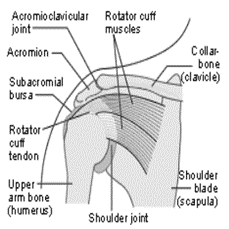Treatment
There is increasing evidence that conservative (non-surgical) management is very effective at managing this condition.
Activity modification
- Initially, it is best to rest from painful activities and modify your activities.
- It is always important to keep moving, however resting from painful activities in the short term can ease strain on the shoulder allowing it to recover. Once pain has settled, you can gradually return to normal activities.
- This condition is normally worse when the arm is lifted forward or sideways to shoulder height or reaching behind your back. Modifying these positions will help the shoulder improve. If you need to lift an object, consider bending your elbow first, or reducing the amount you are lifting. Where possible you should avoid lifting objects to shoulder height.
Pain relief
Using a heat or cool pack on a painful shoulder might help to relieve the pain.
Both heat and cool can be helpful but be careful not to put ice, heat packs or hot water bottles directly on your skin. Instead wrap them with a tea towel or cover.
Over the counter painkillers like paracetamol will ease the pain but need to be taken regularly to control the pain.
A short course of anti-inflammatories like ibuprofen can help with swelling, and therefore help you move more freely.
Follow the instructions on the packet and discuss using them safely with a pharmacist or GP, especially if you have any underlying health conditions.
